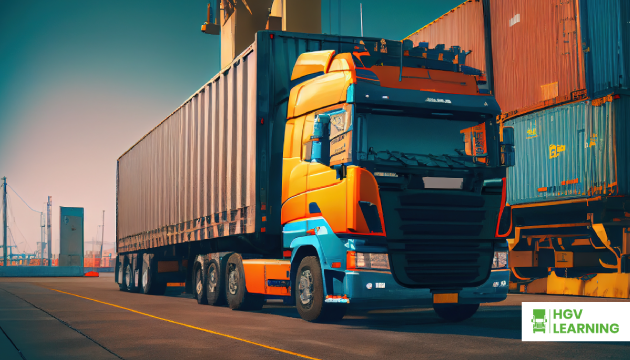Introduction
Obtaining a C1 licence can unlock new opportunities for your driving career. Whether you’re considering a career as an HGV driver or simply want to expand your driving capabilities, a C1 licence allows you to operate vehicles weighing between 3,500kg and 7,500kg. In this comprehensive guide, we will walk you through the process of obtaining a C1 licence, covering everything from eligibility criteria to practical training and application procedures. Let’s dive in!
Eligibility Criteria for a C1 Licence
Before embarking on your journey to obtain a C1 licence, it’s important to ensure that you meet the eligibility criteria. Here are the key requirements:
- Age Requirement: To apply for a C1 licence, you must be at least 18 years old. Keep in mind that the age requirement may vary in different countries, so it’s essential to check the specific regulations in your location.
- Medical Requirements: A C1 licence requires you to meet certain medical standards. This involves completing a medical examination to ensure you are fit to drive. Your general health, eyesight, and any medical conditions that may affect your driving ability will be assessed.
- Eyesight Standards: Good eyesight is crucial for safe driving. You will need to meet the minimum eyesight standards, which typically include having a visual acuity of at least 6/12 (with or without corrective lenses) and a visual field of at least 120 degrees.
- Driving Experience: To apply for a C1 licence, you must hold a full car driving licence (Category B) beforehand. It’s important to have some driving experience to ensure you are familiar with the rules of the road before moving on to larger vehicles.
Understanding the C1 Licence Process
Now that we’ve covered the eligibility criteria, let’s explore the process of obtaining a C1 licence in more detail:
- Theory Test: Before you can hit the road with a C1 licence, you’ll need to pass a theory test. The test covers various topics related to road safety, vehicle maintenance, and hazard perception. Some of the topics you can expect include speed limits, traffic signs, and basic vehicle maintenance. Be sure to study the Highway Code and other relevant materials to prepare effectively.
- Practical Training: Once you’ve successfully passed the theory test, it’s time to undergo practical training. Look for approved training providers who specialise in C1 licence training. They will provide you with the necessary skills and knowledge to operate larger vehicles safely. The duration of the training can vary, but it typically involves classroom instruction and hands-on practice.
- Vehicle Requirements: During your practical training, you will be working with vehicles that fall within the C1 licence category. These vehicles are usually larger and may have different features compared to regular cars. Familiarise yourself with the vehicle’s dimensions, weight distribution, and handling characteristics to ensure a smooth transition.
- Practical Test: Once you feel confident in your abilities, it’s time to take the practical test. The C1 driving test evaluates your driving skills in real-world scenarios. It typically includes tasks such as reversing, parking, and driving on different types of roads. Make sure to practice these manoeuvres extensively and understand the evaluation criteria to increase your chances of success.
Applying for a C1 Licence
After completing the necessary training and passing the practical test, it’s time to apply for your C1 licence. Here’s what you need to know:
- DVSA Application Process: Contact your local Driver and Vehicle Standards Agency (DVSA) office or visit their website to begin the application process. They will guide you through the required steps and provide the necessary forms. Ensure that you have all the required documents ready to avoid any delays in the application process.
- Required Documents: When applying for a C1 licence, you will need to provide certain documents. These typically include your valid driving licence, proof of identity (such as a passport or national ID card), proof of address, and any relevant medical certificates or examination reports. Make sure to double-check the specific document requirements with the DVSA to ensure a smooth application process.
- Application Fees: Obtaining a C1 licence incurs application fees, which may vary depending on your location. The DVLA will provide you with the exact fee amount and acceptable payment methods. Be prepared to pay the required fees when submitting your application.
- Waiting Period: After submitting your application, there may be a waiting period before your C1 licence is issued. The length of this period can vary, so it’s important to plan accordingly. During this time, you can take the opportunity to familiarise yourself with the rules and regulations specific to operating vehicles under the C1 licence category.
Additional Considerations
While the process of obtaining a C1 licence is fairly straightforward, there are a few additional considerations to keep in mind:
- Insurance Requirements: Once you have your C1 licence, it’s important to ensure that you have the appropriate insurance coverage for the vehicles you’ll be operating. Speak with insurance providers specialising in commercial vehicles to obtain the necessary coverage and understand any specific requirements for C1 licence holders.
- Professional Training and Courses: If you’re planning to pursue a career as an HGV driver or work in a field that requires a C1 licence, consider additional professional C1 licence training and courses. These can enhance your skills, improve your employability, and provide valuable insights into the industry.
- Renewal and Validity of C1 Licence: C1 licences are typically valid for a set period. Familiarise yourself with the renewal process and ensure you renew your licence on time to avoid any disruptions in your driving privileges. Stay updated with any changes or updates to regulations that may affect your C1 licence status.






